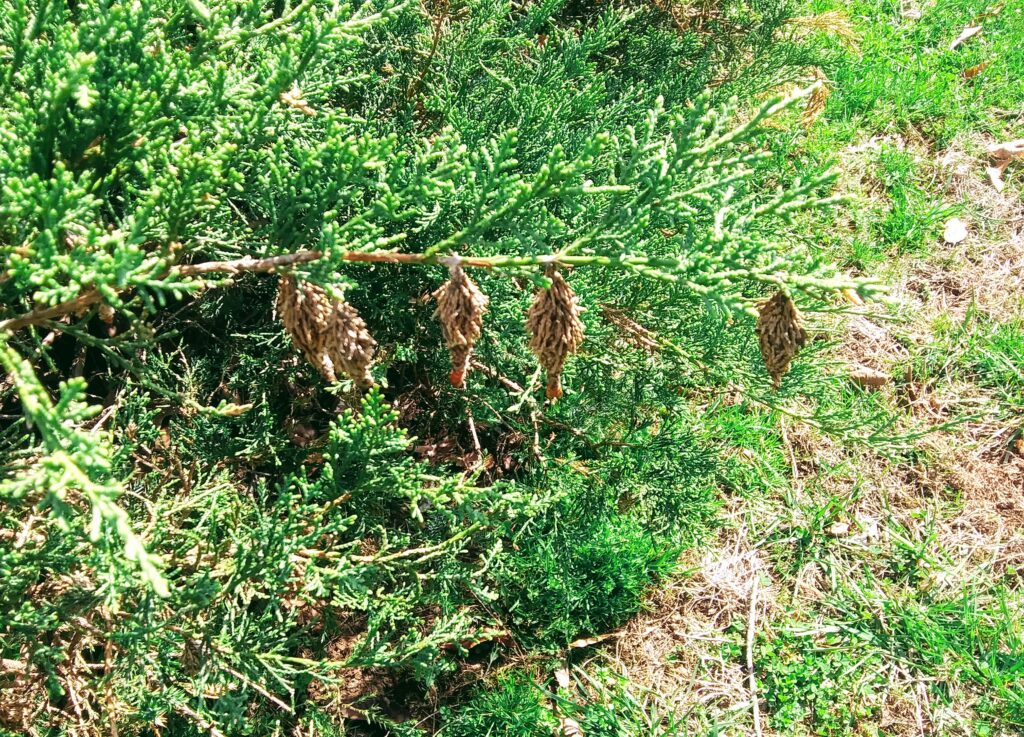Walking down my street, a neighboring shrub had several bagworms sacs hanging from a thin branch obviously a bagworm infestation.
Bagworm Camouflage
Bagworms have a clever way to camouflage themselves and look like mini pinecones. So, it can be a little hard to tell when your plants are infested with them. If you look carefully, you can see the silk thread which holds the bagworm sack to the branch.
The below photograph shows at least four bagworms hanging from a branch looking every bit a part of the plant.

Bagworms can be found anywhere in North America and seem to prefer junipers, pines, and arborvitaes, etc.
In the spring, the insects hatch out of their sacks the begin to feed on the plant and the tips of the plant. Bagworms can defoliate large sections of a shrub or tree. Once treated, a plant or tree can take many years to fully recover.
Quick Bagworm Infestation Cure
Years ago I had a very sparse-looking juniper near my front walkway. I never thought about bagworm infestation until a person from a lawncare company knocked on my door to show me the insect bags.
Fortunately, there are a variety of ways to treat a plant for bagworms and birds also like to eat them.
Since it was early in the spring season, I was able to go out and pull the insect sacks from my plant and dispose of them in soapy water. Never pull them off and toss them on the ground because they will hatch and destroy your plants. If you toss them in your trash, they can also find a way out of the bag.
Helpful Bagworm Information
To treat effectively, it is best to know the life cycle of the bagworm in your part of the county.
Once they crawl out of their egg sacks, they begin to feed immediately. In late summer, bagworms begin making their sacks. Then in the fall, the males bagworms mate with females and the females lay their eggs.
Ending Notes on Bagworm Infestation
Keep in mind that one bagworm female can lay over 500 eggs so it is easy for a plant or garden to get overrun.
Bagworms infestations are a tricky to identify but they can be treated.
Garden Know How.com, Kansas State Research Extension, and Wikipedia were used to research today’s blog topic.

